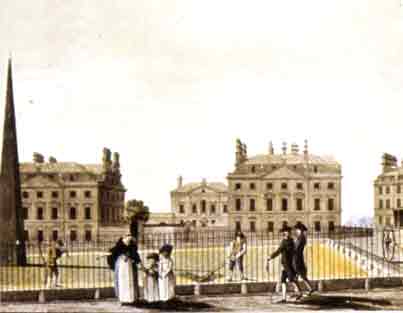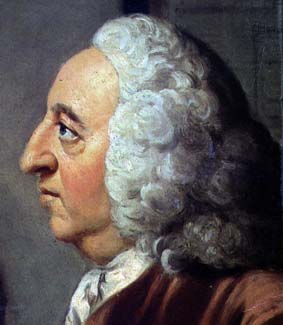
Oliver's
quotes:
|
On arrival, he probably resided in Westgate Street but as he became more successful he acquired a grand house set back on the west side of Queen Square. The house was later demolished and the site is now occupied by
The Bath Royal Literary and Scientific
Institution. The present building was designed in the Greek Revival style by John Pinch, the younger. It is sadly out of keeping with the rest of Queen Square and it is unfortunate that John Wood’s original design did not survive.
Not long after coming to Bath, Oliver became a friend of Ralph Allen, a fellow Cornishman. As a result of this friendship he met Alexander Pope and other famous people of the day.
.
|
- "The
Bath is the universal hospital, not only of this but of other nations, and hither the
physicians send their patients when they know no longer what to do with
them at home.”
- "Mineral waters
are natural
compositions continued for the benefit of mankind, which exceed all the
compounds man can invent.”
- “I cannot forebear mentioning a very offensive
custom of putting milk, and a variety of medicines in the waters at the
pump, which then become mere vehicles, their specific properties being
destroyed by the mixture.”
- "The water
contains an aetherial essence which is lost when transported elsewhere;
it cannot be
contained in bottles as it will pass through the corks"
|
|
Cynics
pointed out that if the waters could be sent to the patient he or she
would not need to come to Bath and the resulting fees would be lost to the
physicians! |
| He
did not write a great deal about his medical cases, though he published an
essay on gout in 1751, which ran to three editions. In 1753 he published a
“pastoral” called Myra and he was the anonymous author of A
faint sketch of the life, manner and character of the late Mr. Nash
which was praised by Goldsmith as “written with much good sense and
still more good nature.” Oliver’s “compassionate and
benevolent nature” motivated his interest in founding the Bath
General Hospital (now Royal National Hospital for Rheumatic Diseases) with
Ralph Allen, John Wood and Richard (Beau) Nash. He was elected physician
to the Hospital on 1st May, 1740, and retired on 1st
May, 1761, dying three years later in 1764. |
|
|
|
 |
He is buried in the churchyard of All Saints, Weston (where he owned the Manor House with members of his family). He is said to have bequeathed to his coachman Atkins the recipe for the famous Bath Oliver biscuit, together with a sack of flour and a sum of money. Atkins set up in business at 13 Green Street and became rich by making the biscuit. Later the business passed to a man named Norris who sold out to a baker called Carter. At length, after two further changes of ownership and a period of 120 years, the Oliver biscuit recipe passed to James Fortt. In 1952 the Fortt family business was still baking 80,000 biscuits a day in Bath. Although the biscuits are no longer made in the city, they are still available and are excellent when eaten with cheese. |



